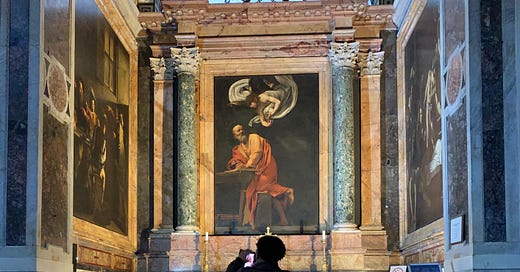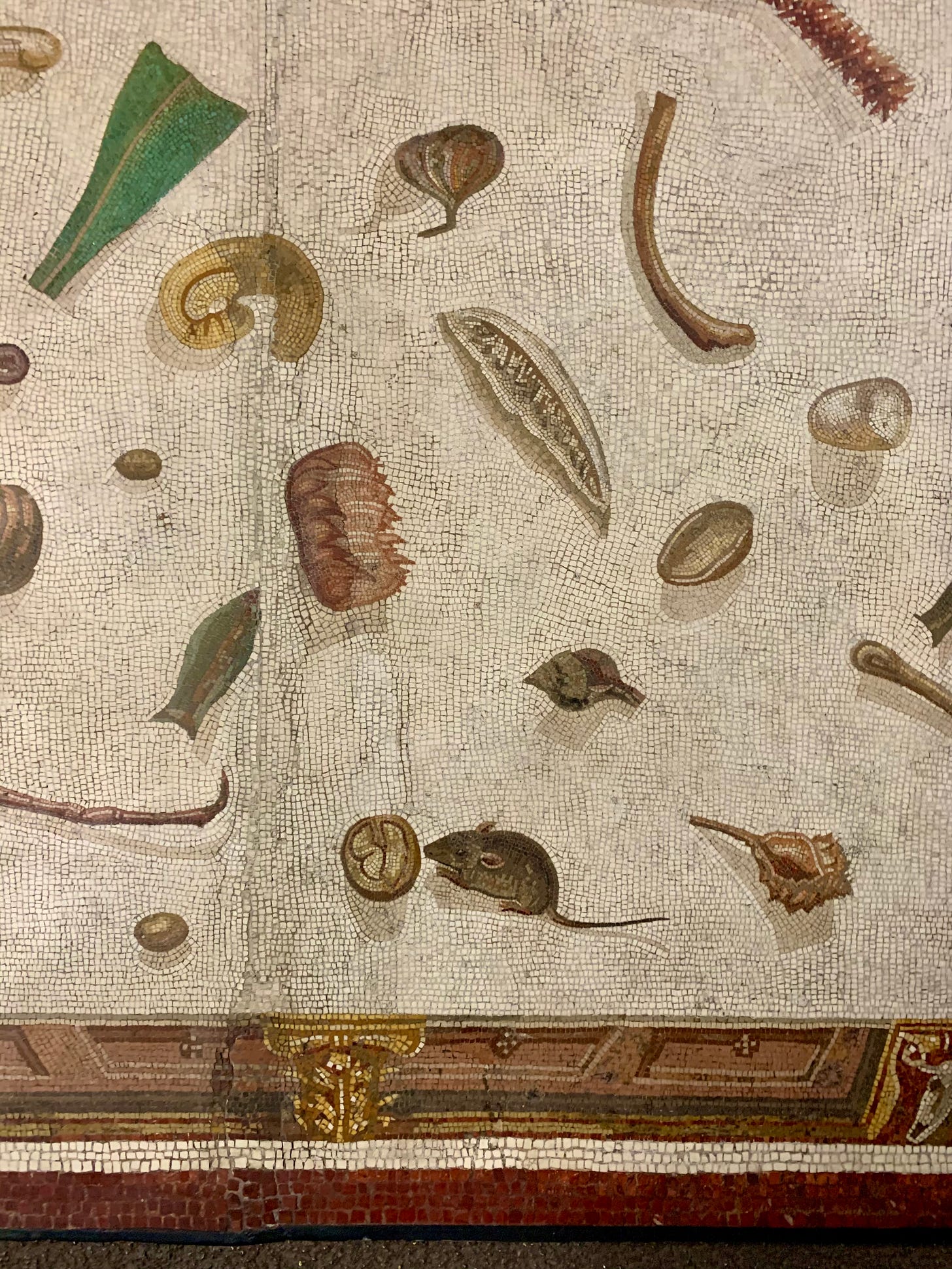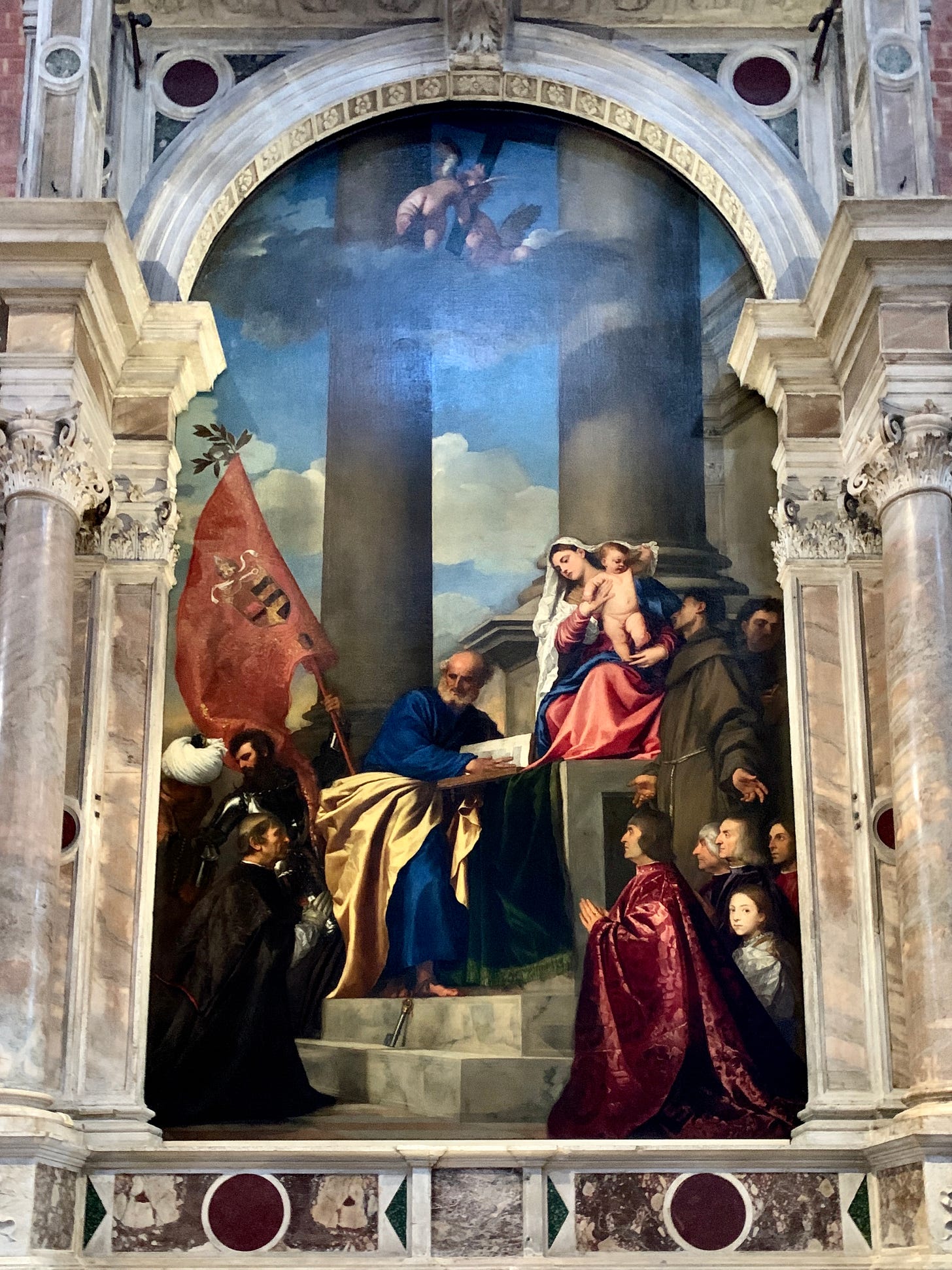Do you have favorite artworks? Pieces that feel like friends that you visit over and over and over again. When I was in college in Washington, DC I lived close to The Phillips Collection. I would stop in regularly and sit in the room with Manet’s Luncheon of the Boating Party and imagine a future life of summer dresses and leisurely lunches at long tables laughing with friends. Now I live in Italy and am surrounded by a bewildering amount of beauty and art. (and my real life can sometimes be pretty close to that imagined one)
These are some of my favorite pieces of art in Italy. (In reality that list is endless.) Most of these are in Rome where I am inordinately lucky to get to visit them on a regular basis. Many of them are famous. But not all of them.
I am not an art historian so I am not going to explain the important details and significance of these works. That is better left to the experts.
I want to hear what your favorites are. Tell me in the comments.
La Fornarina
In the mid-1500s the Renaissance painter Raffaello Sanzio was hired by the wealthy Senese banker Agostino Chigi to paint frescoes in the Villa Farnesina. The widely accepted tale goes that he so was lovesick over a woman he could barely paint. Was she a baker's daughter, Margarita Luti? Maybe. Whoever the woman nicknamed Fornarina was she was later immortalized in the bewitching painting that lives in the Palazzo Barberini. When you are wandering in Trastevere look for number 20 on via di Santa Dorotea. This was the Luti family house.
Asàrotos Òikos Mosaic
The edges of this 2nd-century mosaic in the Vatican Museums depict the unswept floor after a feast. Created from meticulously placed tiny marble and glass squares there are chicken bones and a lobster claw and pieces of fruit and vegetables. It’s fun to hunt for the tiny mouse nibbling on a walnut.
Michelangelo Merisi
It is impossible for me to choose a favorite work by the artist better known as Caravaggio. I do really love the one that lives in Naples. There are 26 here in Rome, some are hidden away in private collections and some are in museums. You don’t need to pay for an entrance ticket to see the six of them that are inside churches. I probably visit the three works that hang in the Cantarelli chapel at San Luigi in Francese the most often. The experience of watching a restoration in progress of the Madonna of Loreto at the Basilica di Sant’Augustino a few weeks ago was unforgettable.
Quattro Fontane, Dea Diana
At one of Rome’s busiest intersections, the point that connects the rioni of Monti, Trevi, and Castro Pretorio, there are four late Renaissance sculptures. Hence the name Quattro Fontane, four fountains. They were commissioned by Pope Sixtus V and built under the supervision of Muzio Mattei. (You recognize that name because he commissioned the Fontana delle Tartarughe) There are two male figures that represent rivers; the Tevere and the Aniene and two female figures that maybe represent rivers? Or maybe the Goddess Juno, and my favorite, the Goddess Diana. She was created by Pietro da Cortona. I love to walk this way on late winter mornings when just her upturned face is lit by the sun.
The Baroque church on the corner is San Carlo alle Quattro Fontane and was designed by Francesco Borromini. Make sure you stop in and look up to see the magnificent monochromatic and geometric ceiling dome.
Madonna di Ca' Pesaro Altarpiece
We spend a lot of time in Venice but rarely deep in the Sestieri San Polo. This year I have made an effort to spend more time over there. One thing that makes it worth the trek across bridges and canals is Venice’s largest church the Basilica di Santa Maria Gloriosa dei Frari or as the cool kids say, Frari. This church has Canova’s heart, the sculptor you know from his provocative Pauline Bonaparte as Venus Victrix in Rome, a lovely Bellini altarpiece, and a Donatello. The painting that makes me swoon is the Madonna di Ca' Pesaro by Tiziano Vecelli, aka Titian. It was restored by Save Venice in 2017 and the yellow silk of Saint Peter’s robe positively shimmers.
The Tomb of the Diver
I find this simple funerary piece, a stone slab covering an ancient tomb, so emotional. The simple, almost naive, lines capture the moment of the diver suspended between worlds. Between the temporal world and eternity. Dating between 480 and 470 BCE it is the only example of a Greek wall painting from the Classical period to survive in its entirety. A trip to the museum in Paestum (and the nearby beaches and buffalo farms) is always a good idea.











Gillian, you've mentioned many of my own favorites, especially those Caravaggios (Caravaggio?) in san Luigi. But if we add architecture, my favorite over all is the Pantheon. Years ago when I lived in Rome I used to consider it the best hangover cure in the world. Walk in there in the early morning and you could feel your beleaguered scalp lifted while a cool breeze blew through to refresh the mind.
Love these posts!